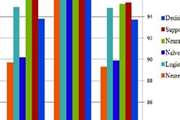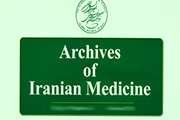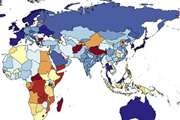Prevalence of comorbidities in patients with multiple sclerosis using administrative data from 2007 to 2016 in Iran
Research interest in the impact of comorbidities in MS has been expanding. Based on studies, certain comorbidities are more prevalent in MS population such as depression, anxiety, hypertension and hypercholesterolemia, diabetes, and hypothyroidism.
Global, regional and national sodium intakes in 1990 and 2010: A systematic analysis of 24 h urinary sodium excretion and dietary surveys worldwide
Objectives: To estimate global, regional (21 regions) and national (187 countries) sodium intakes in adults in 1990 and 2010. Design: Bayesian hierarchical modelling using all identifiable primary sources
Methodology and early findings of the fourth survey of childhood and adolescence surveillance and prevention of adult non-communicable disease in Iran: The CASPIAN-IV study
The fourth survey of the surveillance system named “childhood and adolescence surveillance and prevention of adult non-communicable disease” (CASPIAN-IV study), was conducted among a national representative sample of Iranian students. This paper describes the methods and early findings of this survey.
Response to letter regarding article, "the global cardiovascular risk transition: Associations of four metabolic risk factors with macroeconomic variables in 1980 and 2008"
Response to letter regarding article, "the global cardiovascular risk transition: associations of four metabolic risk factors with macroeconomic variables in 1980 and 2008"
Years lived with disability (YLDs) for 1160 sequelae of 289 diseases and injuries 1990-2010: A systematic analysis for the Global Burden of Disease Study 2010
Background: Non-fatal health outcomes from diseases and injuries are a crucial consideration in the promotion and monitoring of individual and population health. The Global Burden of Disease (GBD) studies done in 1990 and 2000 have been the only studies to quantify non-fatal health outcomes across an exhaustive set of disorders at the global and regional level. Neither effort quantified uncertainty in prevalence or years lived with disability (YLDs).
A comparative risk assessment of burden of disease and injury attributable to 67 risk factors and risk factor clusters in 21 regions, 1990-2010: A systematic analysis for the Global Burden of Disease Study 2010
Background: Quantification of the disease burden caused by different risks informs prevention by providing an account of health loss different to that provided by a disease-by-disease analysis. No complete revision of global disease burden caused by risk factors has been done since a comparative risk assessment in 2000, and no previous analysis has assessed changes in burden attributable to risk factors over time.
National, regional, and global trends in adult overweight and obesity prevalences
Overweight and obesity prevalence are commonly used for public and policy communication of the extent of the obesity epidemic, yet comparable estimates of trends in overweight and obesity prevalence by country are not available.
The completeness of medical records to assess quality of hospital care: The case of acute myocardial infarction in a district-level general hospital in Iran
BACKGROUND: Quantifying the quality of care in high-cost and fatal conditions such as acute myocardial infarction (AMI) is a crucial step toward improving clinical outcomes in these patients. The main objective of this pilot study is to show whether abstraction of medical charts would be a useful method to systematically assess quality of care in patients hospitalized for AMI in a general hospital that has no interventional cardiac technology.
Cardiovascular disease prevention using fixed dose pharmacotherapy in Iran: Updated meta-analyses and mortality estimation
Background: Short term randomized trials have shown the effectiveness of a fixed dose combination therapy (known as Polypill) on reducing blood pressure and serum cholesterol but the impact of Polypill on cardiovascular disease risk or mortality has not yet been directly investigated. Previous studies combined the effects of each component assuming a multiplicative joint risk model that may have led to overestimating the combined effects. We conducted an updated meta-analysis of randomized trials of anti-hypertensives, and aspirin. We used the estimated effect sizes applying a more conservative assumption to estimate the number of ischemic heart disease (IHD) and stroke deaths that could have been averted by Polypill in Iranians aged 55 years or older in 2006.
The age associations of blood pressure, cholesterol, and glucose: Analysis of health examination surveys from international populations
Background: The age association of cardiovascular disease may be in part because its metabolic risk factors tend to rise with age. Few studies have analyzed age associations of multiple metabolic risks in the same population, especially in nationally representative samples. We examined worldwide variations in the age associations of systolic blood pressure (SBP), total cholesterol (TC), and fasting plasma glucose (FPG).






_crop.png)
_crop.jpg)



_crop.jpg)

